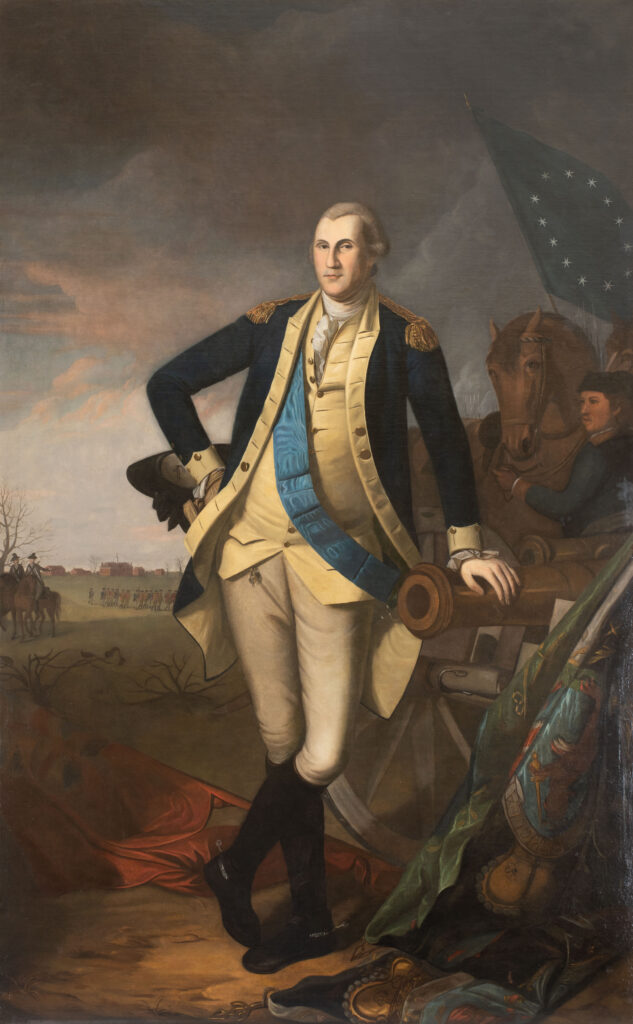
Collections
Washington at Princeton
authentication study
& condition assessment
The Department of State has owned this Washington at Princeton portrait since 1989. An American living in Paris donated the portrait to the Department in her will. At the donor’s request, the portrait has hung in the U.S. Embassy Paris Ambassador’s Residence since that time. It was attributed to Colonial American painter, Charles Willson Peale (1741–1827), but provenance could not be proven through the limited documentation available.
The Office of Cultural Heritage contracted an art historian and art conservator to conduct a careful study of the painting. The study revealed, with a high degree of confidence, that the painting is, in fact, one of the original versions of Washington at Princeton by Charles Willson Peale, and that it is the Laurens-Albemarle painting.
TITLE
Washington at Princeton
YEAR OF ORIGIN
1779
ARTIST
Charles Willson Peale
BUREAU
EUR
POST
Paris
TYPE
Heritage Asset — Art
HOW THE STUDY WAS CONDUCTED
We thank the American and French partners involved and the Office of Cultural Heritage for their work confirming that our treasured Washington portrait, displayed in the Louis XVI salon of the Ambassador’s Residence for the last 38 years, is in fact the original Charles Willson Peale painting lost to the art world for 60 years.
Ambassador Denise Campbell Bauer, U.S. Ambassador to France and Monaco
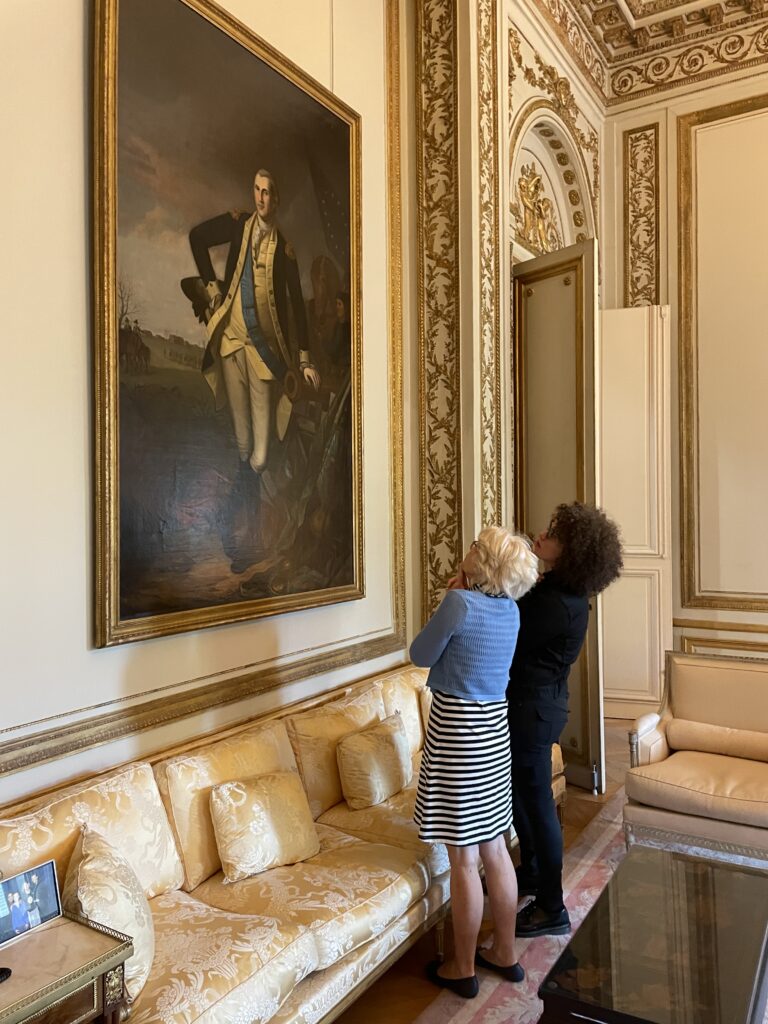

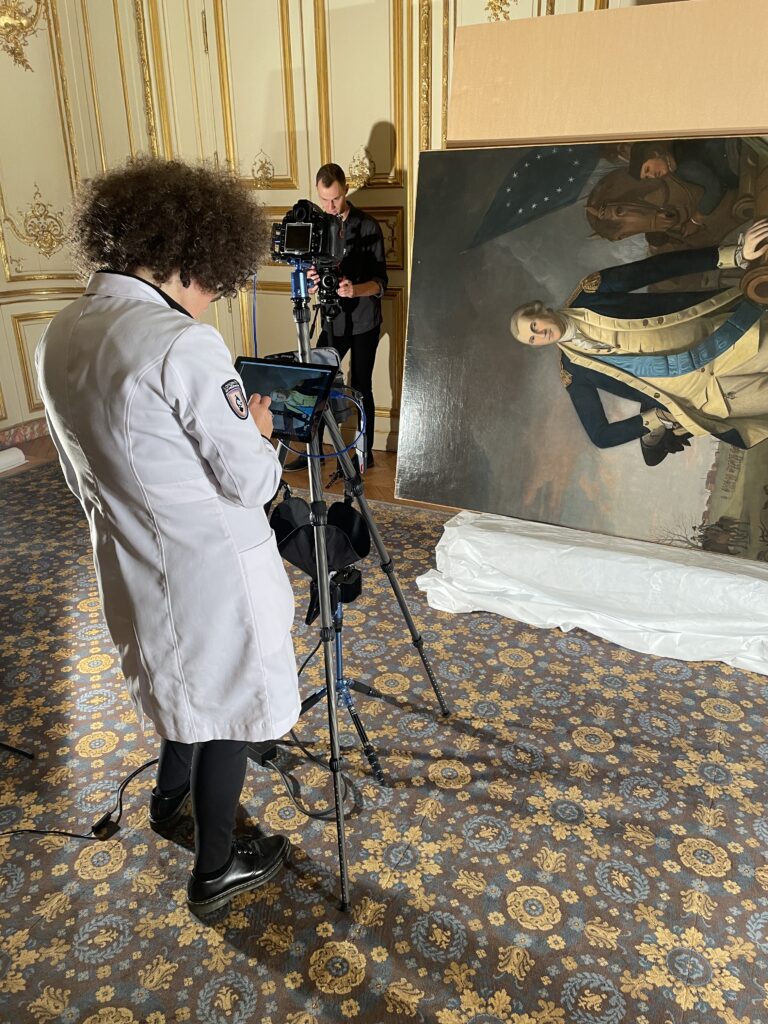
WHO WAS CHARLES WILLSON PEALE?
Charles Willson Peale is an artist inextricably linked to the American Revolution. Not only were his politics shaped in advance of it, his military and domestic service during the conflict and his creation of portraits documenting many of its participants established a lasting legacy that firmly links him to the events and individuals of the period of the Revolution and the early Republic.
With his access to important American colonial figures, Charles Willson Peale also has the distinction of having painted George Washington from life more than any other painter. Peale’s Washington at Princeton is a portrait conceived as a State Portrait, in the grand manner. Designed to celebrate a national hero and be placed in an impressive space, it is a picture about victory.
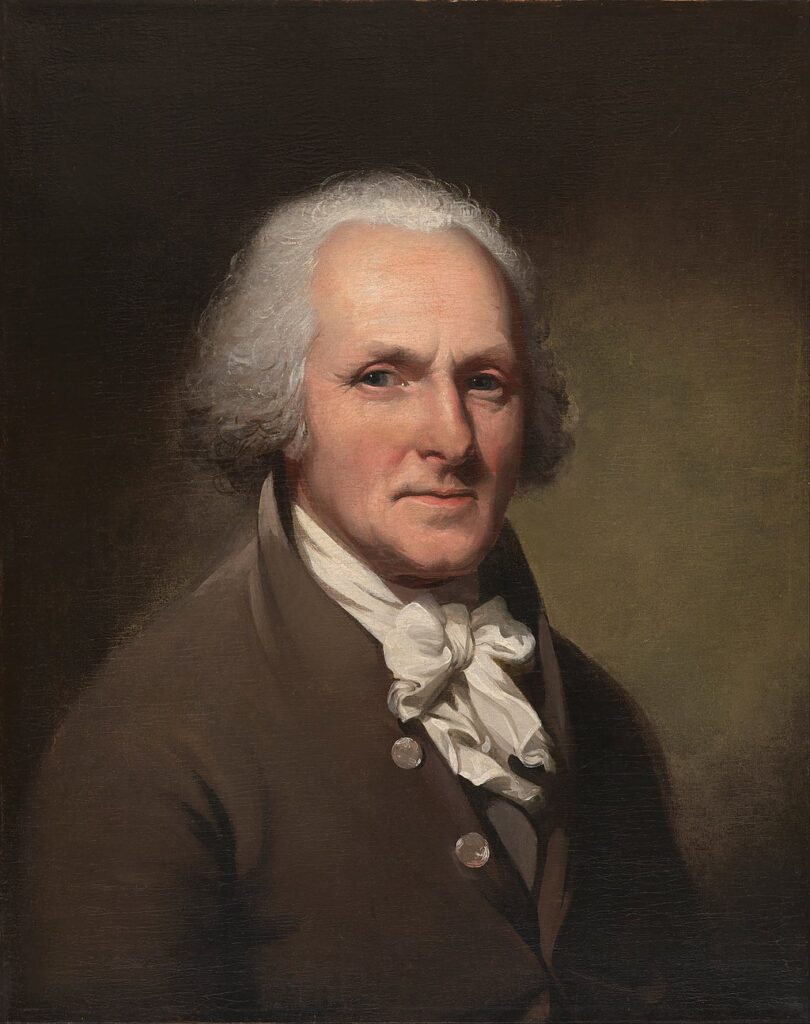
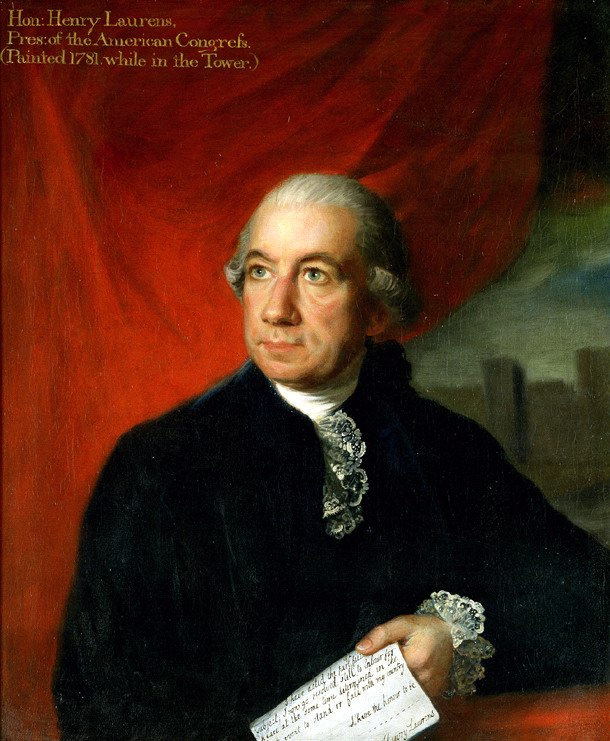
A DIPLOMATIC GIFT, CAPTURED AT SEA
As a representative of the Continental Congress and minister to the Netherlands, Henry Laurens (1724–1792) was taking the portrait with him aboard the American ship, the Mercury, presumably as a diplomatic gift to Holland while he was conducting negations for a loan from that country’s government. His boat was seized by the British vessel, the HMS Vestal, off the coast of Newfoundland on September 3, 1780 and the portrait of George Washington was seized. Laurens himself was imprisoned in the Tower of London for over a year.
The captain of the HMS Vestal was Capt. George Keppel (a son of Gen. George Keppel, Lord Albemarle). The portrait was taken to Quiddenham Park, the seat of the Earls of Albemarle, as a spoil of war where it stayed until its sale at a Sotheby’s auction in London in 1946.
THE PROCESS OF AUTHENTICATION
Primary Resource Research
The experts conducted art historical research using primary sources of art sales and exhibition catalogs in the 20th century, personal papers of the art dealer and donor, and newspaper articles. These findings were applied to the physical clues present in the portrait’s composition, condition, and on the framing materials.
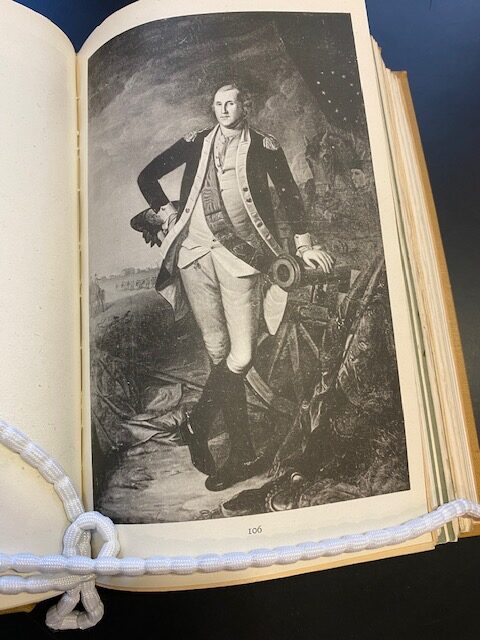
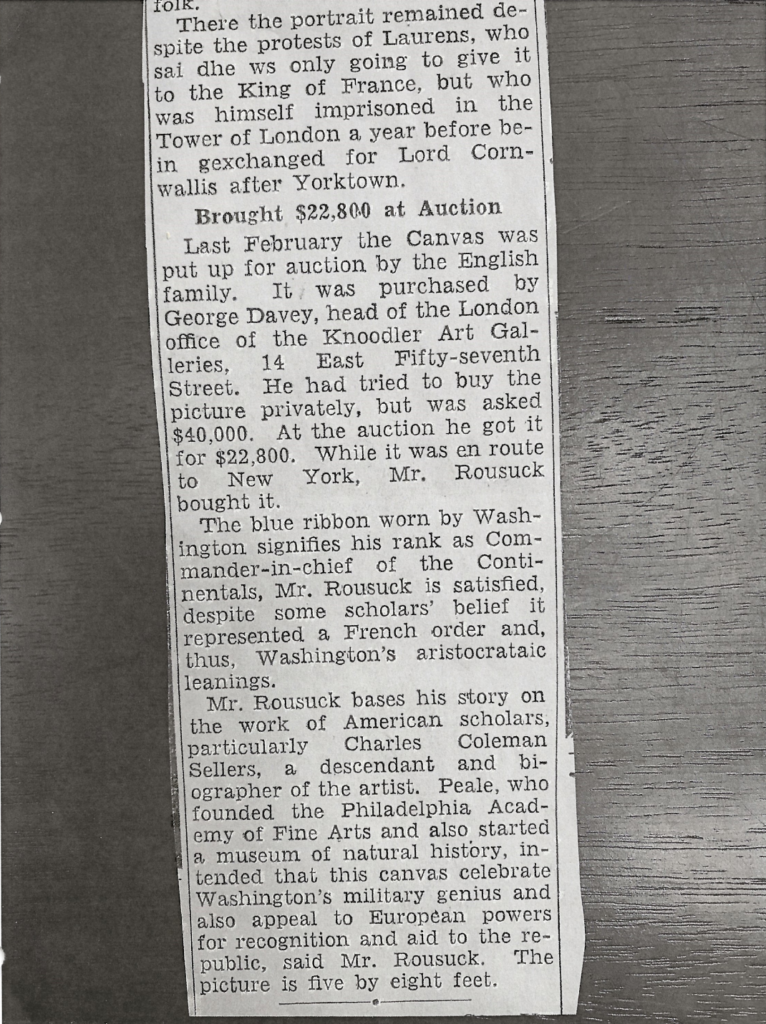
Comparative Study
Comparative study of known Charles Willson Peale Washington at Princeton portraits included in-person visits by the experts and CH staff to:
- the Pennsylvania Academy of the Fine Arts (the original version)
- George Washington’s Mount Vernon (a 1780 three-quarter version of the original)
- the U.S. Senate (a 1779 former diplomatic gift to France)
The team also visited the Palace of Versailles in France to study a Washington at Princeton of unknown provenance. Additional comparative data was provided by Colonial Williamsburg Foundation from their 1780 full length version of Washington at Princeton by Charles Willson Peale.
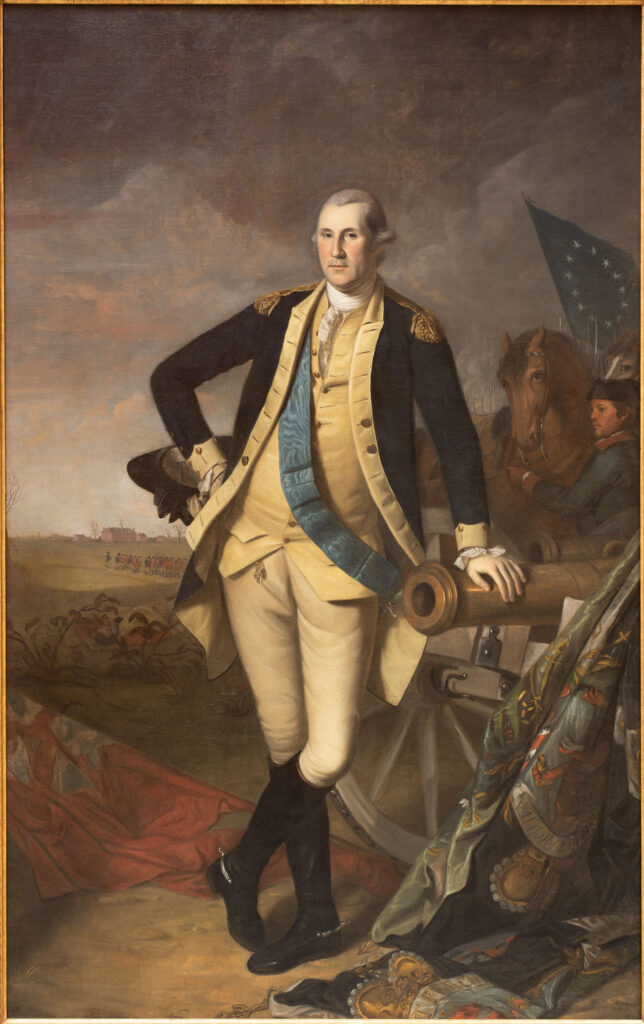
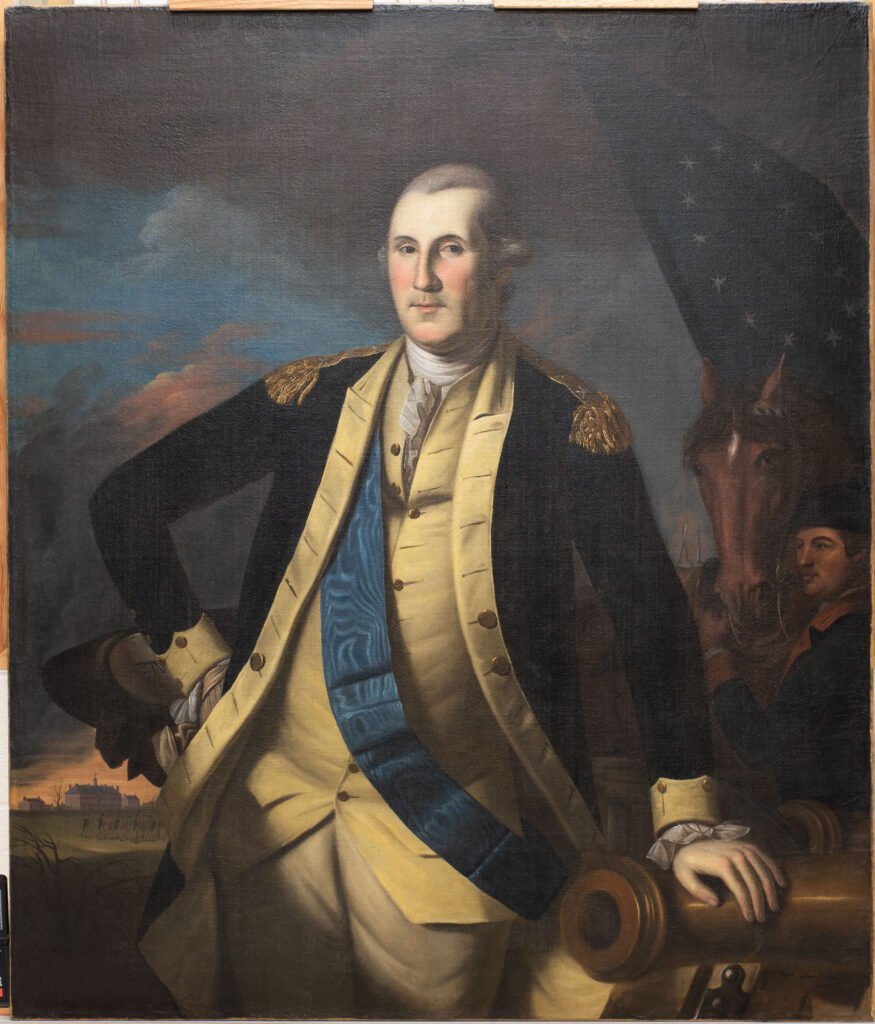
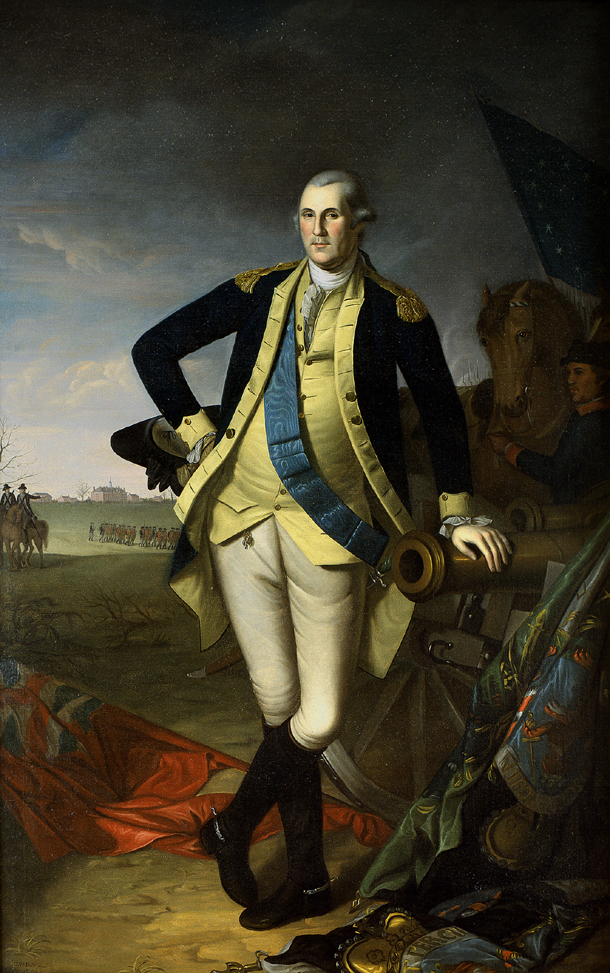
Forensic Analysis
In addition to visual examination, technical photography under various light conditions, non-destructive elemental analysis, and select material sampling [from Mount Vernon’s copy] of these known Peale versions helped to create a baseline of what the experts should expect in a “real” Charles Willson Peale painting.
The team of experts and CH staff traveled to Paris to perform materials and conditions analysis on the painting in question. This was conducted in the US Embassy Paris Ambassador’s Residence over the course of five days, in which two of those days the painting was taken to C2RMF (The Center for Research and Restoration of Museums of France conservation studio at The Louvre) for x‑ray imaging and photomicrography.

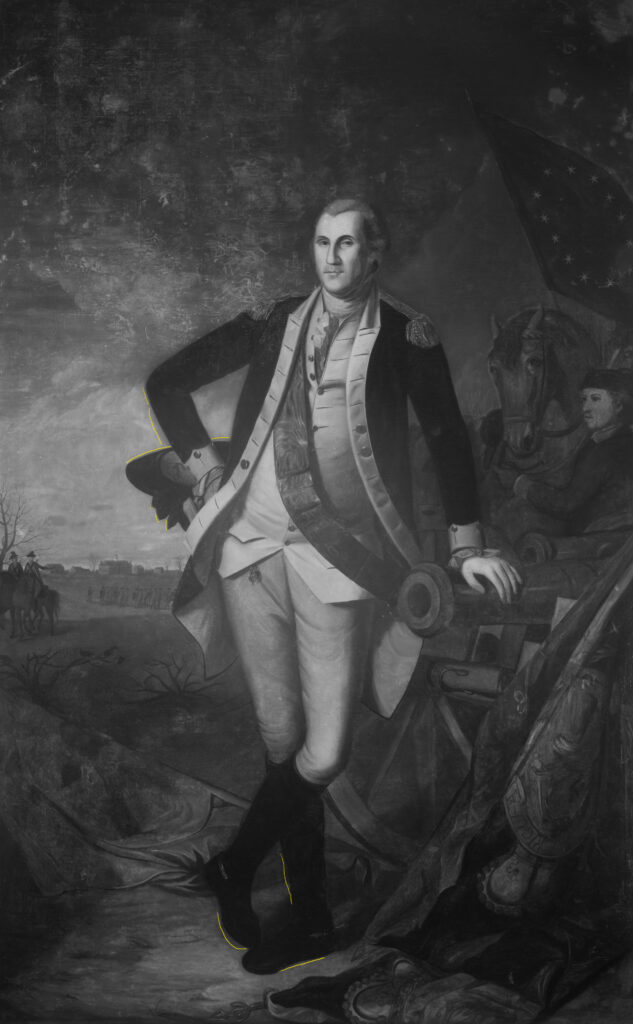

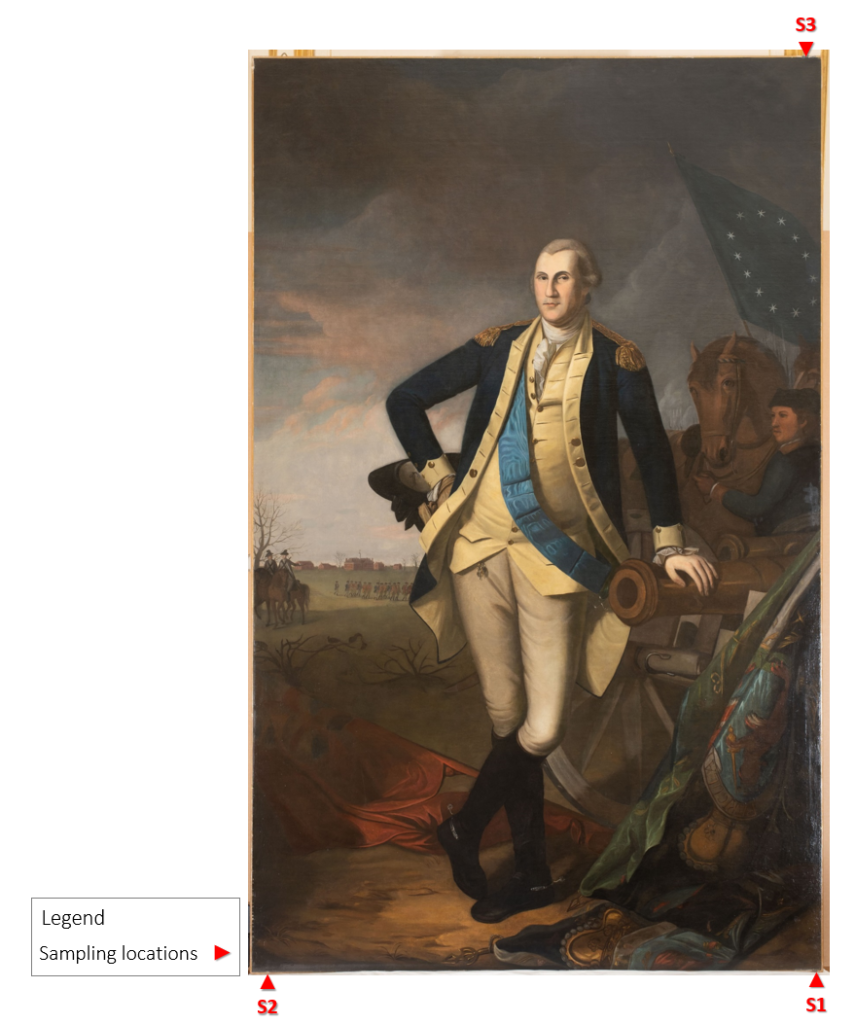
FUTURE CONSERVATION
The findings from this study, conducted over the course of 2022, will inform future conservation of the U.S. Department of State’s Washington at Princeton portrait by Charles Willson Peale.
The Office of Cultural Heritage and U.S. Embassy Paris will collaborate with a committee of experts from the United States and France to oversee the painting’s treatment in Paris. The Franco-American institutional partnerships that helped realize the study will continue to guide the project’s next phase.
